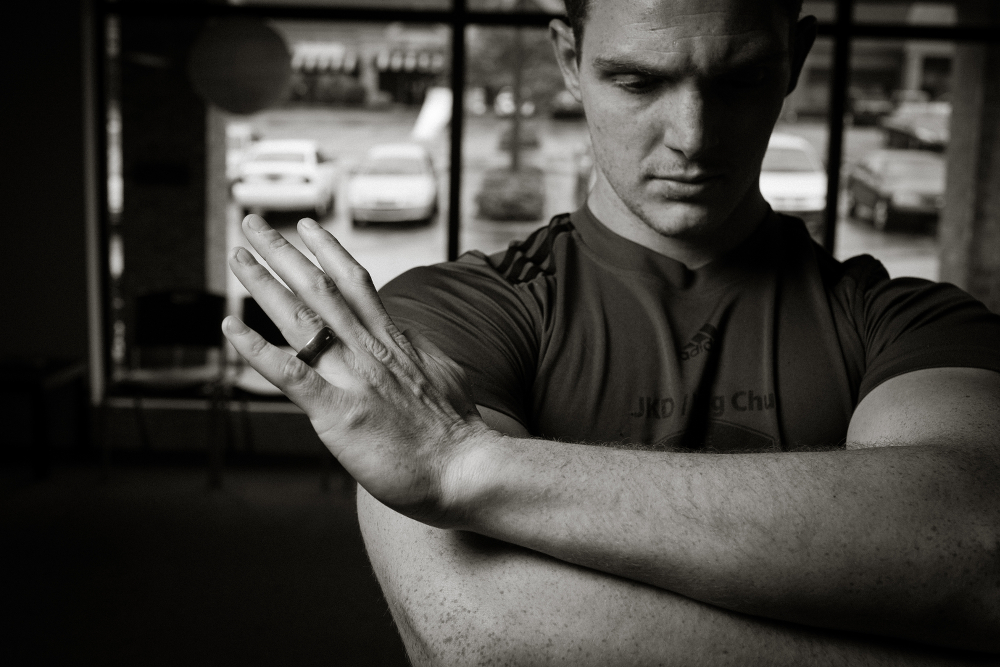
Foundations
Level 1 – Level 4
Basic Level Training
Jeet Kune Do, as an art that stresses simplicity and aliveness above all else, is a system that places a large emphasis on mastering the basics. These levels of your training are paramount! The tools and principles presented to you during this phase of development will most likely be your go-to if faced with a situation where you need to use your training. Furthermore, because these skills form the foundation of our art, they will be built on later as you advance. If you’re hoping for something flashy then you may be in the wrong place. The motions below are utilitarian in nature. They are simple, direct, effective, and are for the sole purpose of keeping you safe.
Beginner
Bi-jong
-
Also known as: on-guard stance, small phasic bent knee stance, and ready position.
-
Neither an open or closed stance.
-
Hand Positioning
-
Gun-sight governs lead hand position from neutral point.
-
The lead punch is the primary defensive weapon.
-
Rear guard use for defense, held higher and to the rear of lead hand… Generally positioned in the center line. The goalie hand – it picks off (parries) what gets past the lead hand/foot arsenal and footwork.
-
Guard can change to accommodate roundhouse swings, e.g., high arm jam (Biu Sao, Tan Sao, etc.).
-
-
Foot Positioning
-
Weight distribution even.
-
Weight centered towards the middle/balls of feet.
-
Knees must be bent (a straight knee is a broken knee).
-
We have a triangular base; head and trunk should never pass toe/knee line.
-
Rear heel raised slightly.
-
For springing energy.
-
For defense on the snap back.
-
Is the piston of the whole fighting machine.
-
-
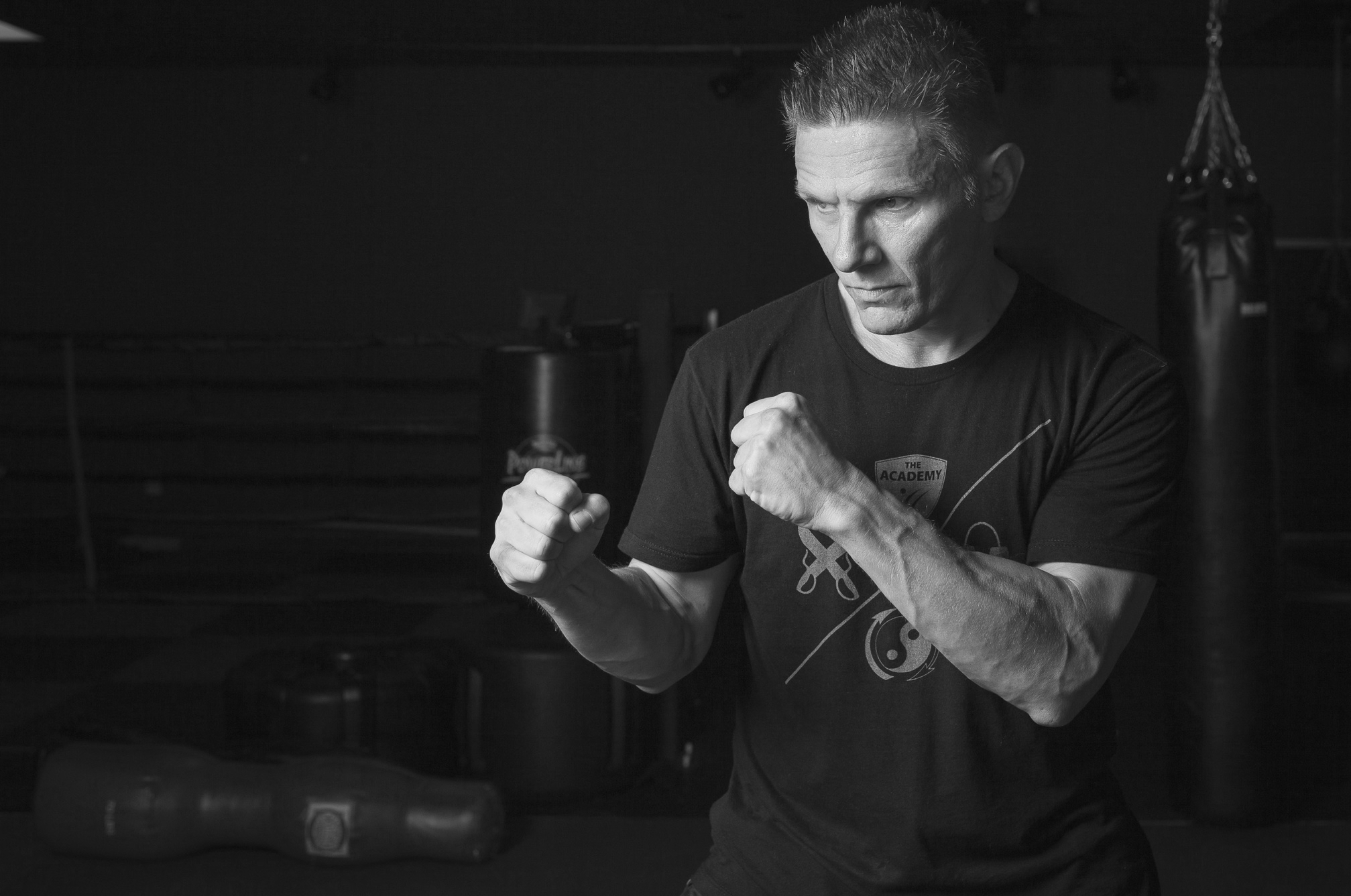
“The purpose of footwork is to move the ready position.”
Jab
-
A fast, loose, easy stinger.
-
A snappy, whip like blow.
-
Especially useful in defense since it can be thrown while in movement. Requires no hip or shoulder commitment though the shoulder should be loose, not restricting the extension and whip of the jab.
-
When used by the serious student, can disrupt just about any attack – especially when combined with proper footwork.
-
Hand should whip forward with no telegraphic movement.
-
The jab is especially helpful if thrown in two’s and three’s.
-
Since this is a pure speed punch, there is no “arc” on it. Hand should return along the same path it is thrown.
-
Fastest punch in your arsenal, not a particularly heavy blow but blindingly fast and busy.
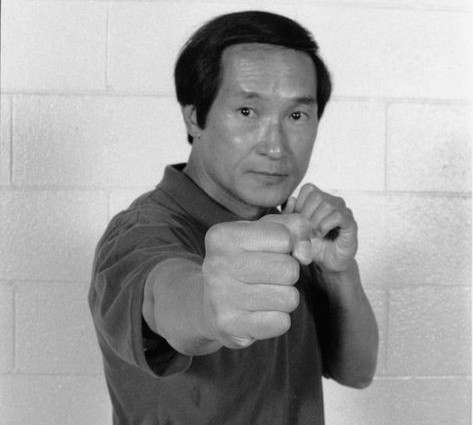
Cross & Rear Straight Punch
-
The cross is thrown from an angle, with a horizontal fist, at the exposed chin.
-
The Rear Straight Punch is thrown with the fist vertical, straight down the center line at any exposed target.
-
The elbow turns out on the cross and stays down on the straight punch.
-
With either punch, the straighter, the better.
-
Turn hip and shoulder easily by pivoting on ball of rear foot. At impact, rear toes, knee, hip and shoulder should be all be facing the target.
-
Don’t telegraph… Many people try to hit too hard with the rear hand and, therefore, lean forward with their upper body before the fist is on its way.
-
This is a heavy, knockout blow.
-
Watch your balance! Don’t lean over the front leg and push the blow.
“The straighter you keep the cross, the more accurate and the more explosive it will be.”
from the Tao of Jeet Kune Do
Snap/Vertical Kick
-
Usually to groin but can be used to the chin and face (against foe in open stance).
-
Is great as a shin/knee kick if you have shoes on.
-
Use snappy power from whip of knee, not hip.
-
One of the major kicks in JKD because many opposing styles/stances daringly expose the groin to this potent weapon.
-
A solid snap kick to the groin can cause terrible damage to any foe – potentially finish any fight at a moment’s notice.
-
Think speed, speed and speed!
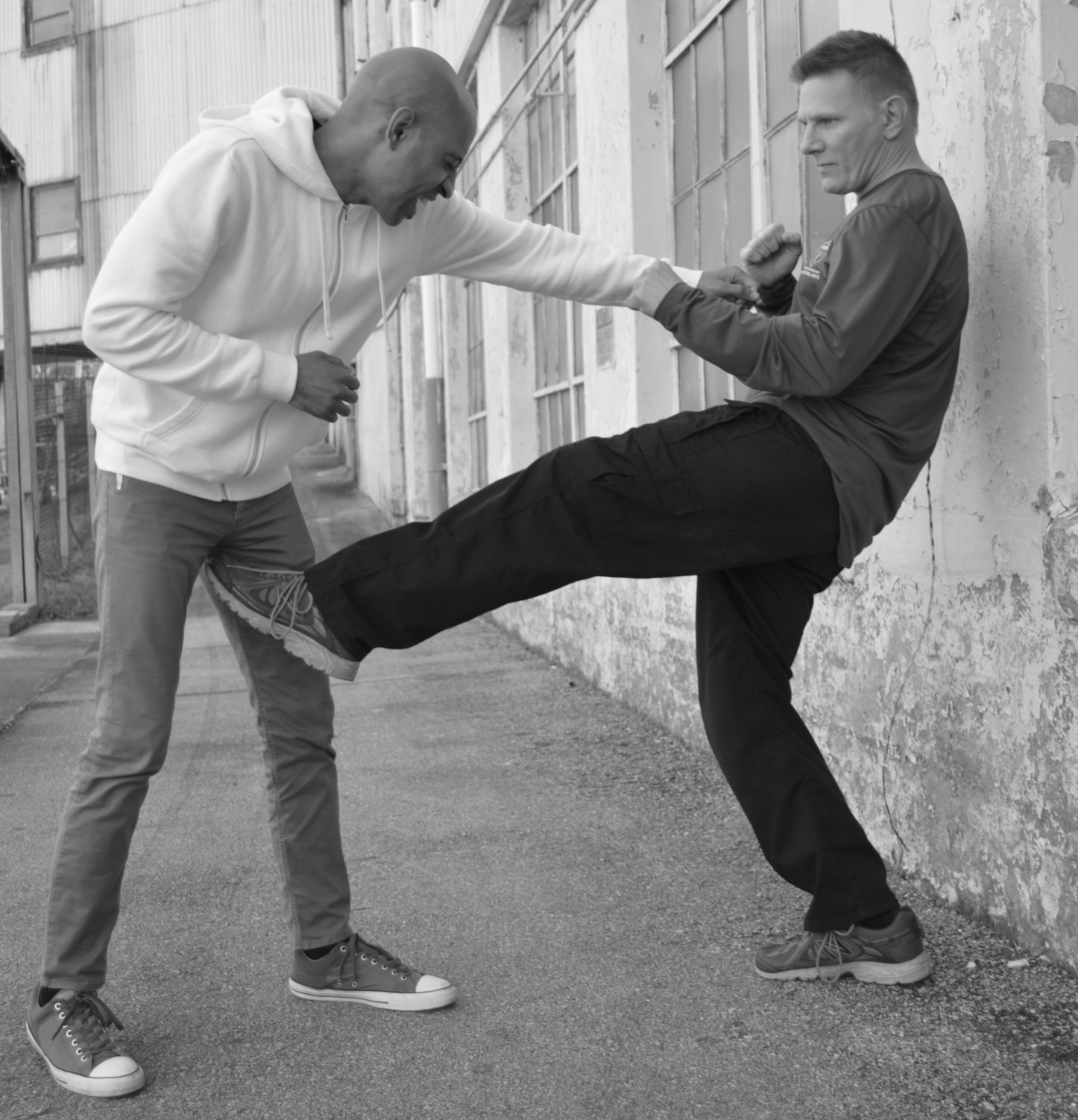
Sliding Steps (Quick Steps)
-
Quick Retreat and Advance.
-
Light and easy; rapid and smooth.
-
move foot opposite the direction you are going first.
-
Look to maintain perfect balance throughout the motion – especially in recovery, no extra shuffling of feet or shifting of weight.
Sil Lim Tao – Section 1
-
Opening of the Stance
-
Yee Jee Kim Yeung Ma.
-
Triangular stance.
-
Sink your hips forward – chaam (sinking).
-
-
For all-out fighting one must have mobile stability.
-
Falling, tripping or getting pushed/pulled off your base is a serious fighting hazard.
-
To have “no way as way” one must have the ability to move properly, that is – with balanced mobility.
Level 1
Lead to the Body
-
Not a jab, but a stiff lead.
-
Shift weight forward and down. Try and get to the same level you are punching from; careful not to punch “downhill.”
-
Your chin should be covered by your lead shoulder and keep you should keep your rear guard up to ward off counters.
-
Drive the blow forward, not scraping, so that the weight of your forward shift hits him solidly in the trunk.
-
Is a splendid counter punch – especially by moving your head slightly to the outside as you shift weight forward and down.
-
The front foot can slide forward – leaving the rear in it’s place – to gain distance and add wallop (Forward Thrust footwork).
-
Very effective against foes that keep a high guard and/or pull back rather than move away from jabs/leads to the head.
Cross to the Body
-
A heavy, brutal blow that can end a fight.
-
A relatively safe blow to fire since you change levels to fire it.
-
Turn on the ball of the rear foot – just like with the cross – to get the shoulder and hip into the blow (powerline).
-
Keep the lead hand high for counters. Chin should be tucked behind rear shoulder.
-
Remember, you have a foot of body to shoot at for each inch of chin… Also the body is less mobile.
“This blow should be used more frequently… opportunities for the use of this blow are rather frequent, since it is one the best counters to the opponent’s opposite lead, which exposes one side of his body.”
Tao of Jeet Kune Do
“Going to the body with power from either hand is the mark of the expert. The world is full of head-hunters that forsake the body.”
Jim Driscoll
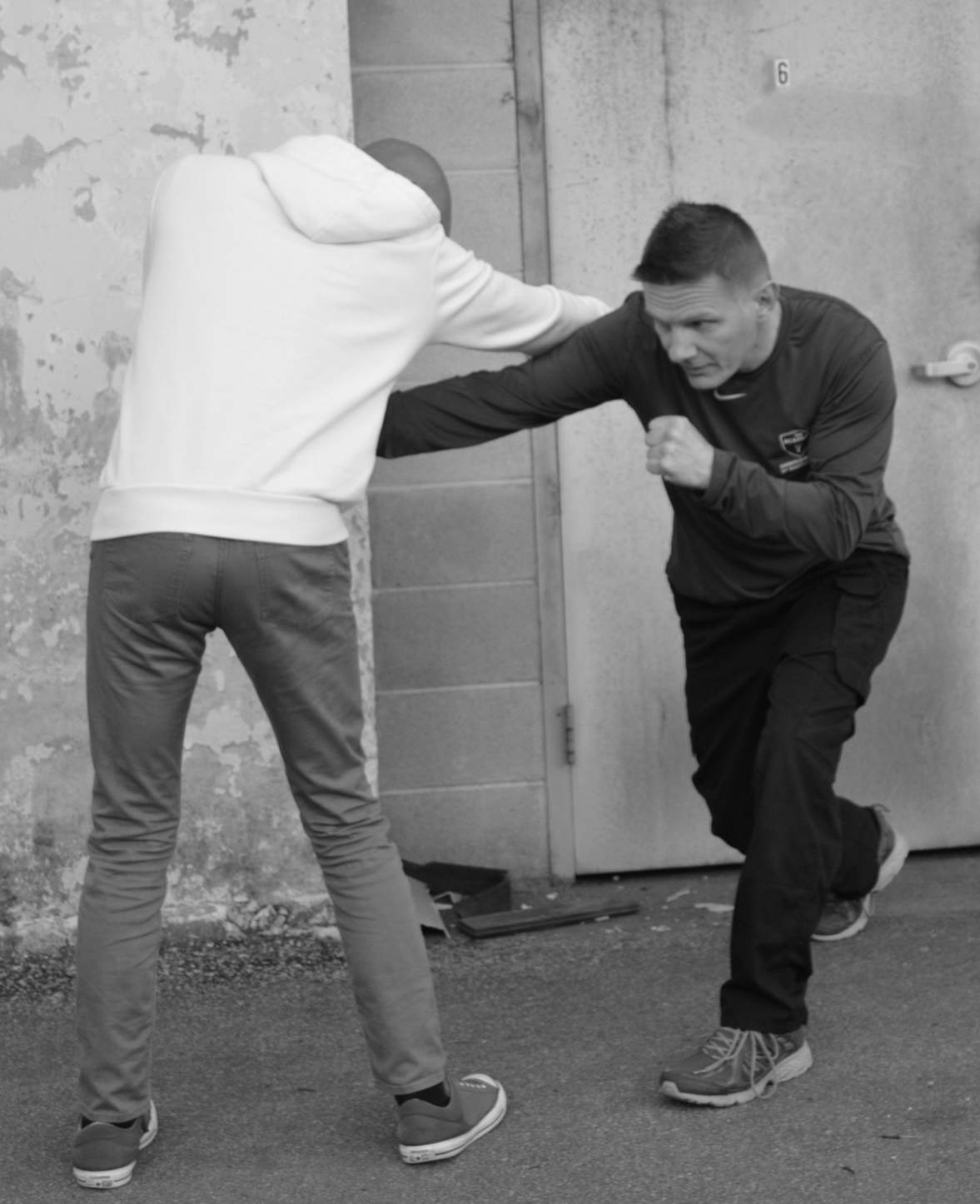
Front/Jab Kick
-
Not used nearly as much as it should be in fighting today. Though not as heavy as the side kick, still can be used with considerable power.
-
Land with the ball of the foot; lean back and thrust the hips at impact.
-
Don’t push this kick, snap it.
-
Very effective when thrown to the bladder/low abdomen.
-
Can also be used as a “drop” kick (when raising knee to midsection) to the knee.
-
Excellent stop kick that is easy to use when your weight is temporarily shifted to the rear leg (Thai boxers use this stance/tactic quite often). Instead of ball of foot, use the heel for stop kicks as this helps prevent loss of balance.
Rear Straight/Cross Kick
-
Keep it straight along the floor, don’t raise the foot until it crosses the front leg.
-
Lean back and snap it to give it reach and power.
-
Not as long a kick as the side kick, but it’s a great mid/long range tool against a foe who moves into the rear line and can end matters immediately.
-
Generally easier to throw than the Front/Jab kick since it can be launched without footwork, making the rear straight kick an excellent counter/stop kick and a particularly cruel kick to use in combination – perhaps after a jab/cross combo.
-
Shoot it at the opponent’s body, head, hip, thigh or knee.
-
Like the cross to the body, this is another underused tool that should be practiced and perfected for it can become impossible to guard against when done expertly simply due to the fact that it can shoot from head to toe with frightening power and no wind-up.
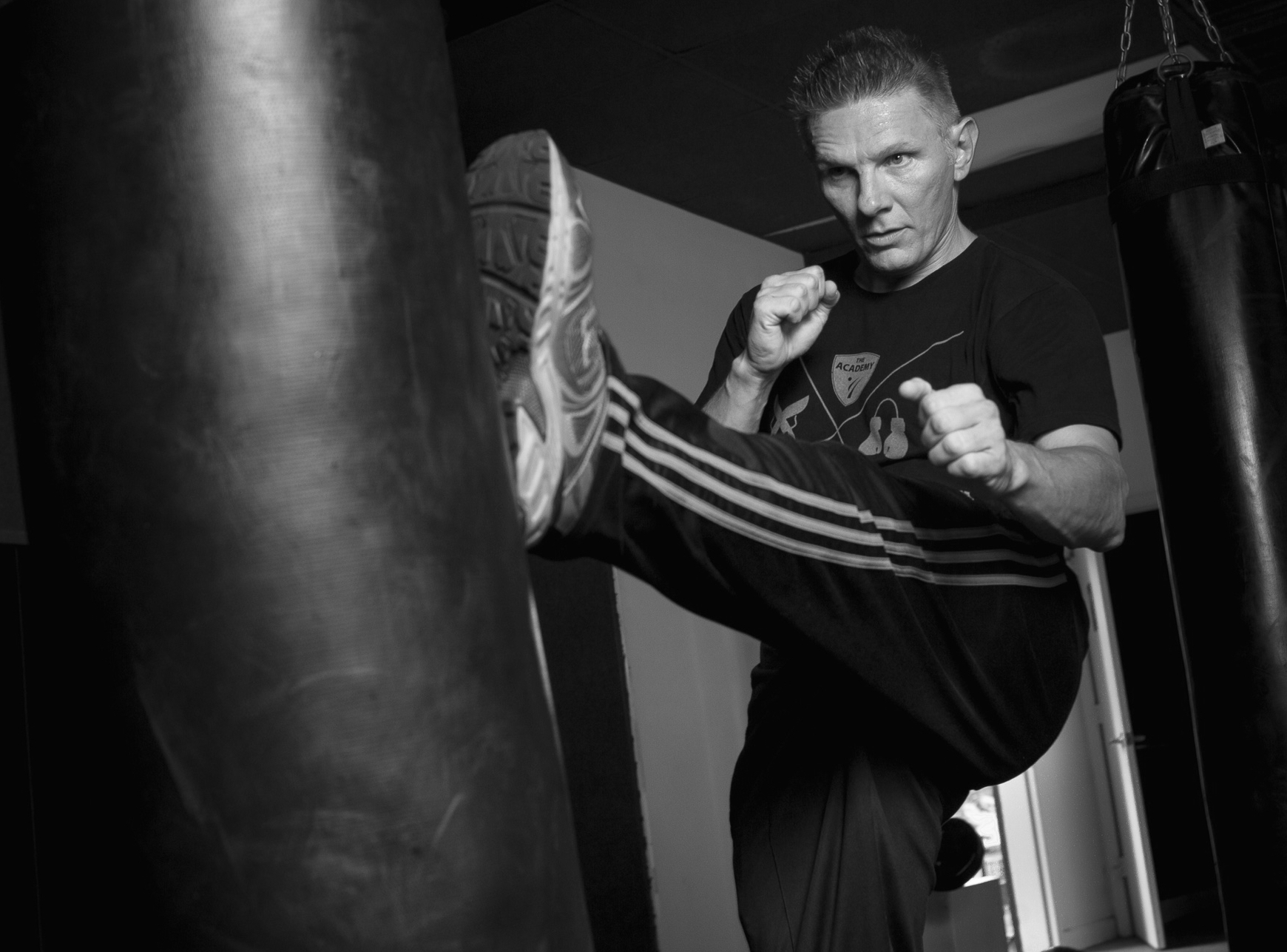
Step-and-Slide
-
A quick, rapid, short motion.
-
Foot closest to the direction you are going goes first.
-
The most used type of footwork in JKD due to it’s economical structure.
-
As always, move with perfect balance – Sijo Lee called this “stillness in motion”.
-
An expert appears to glide.
-
Avoid shifting of weight when doing the step and slide.
-
You simply lose JKD if you lose the Step-and-slide type footwork because this would make non-telegraphic attacks virtually impossible. This cannot be overstated. The essence of the aforementioned offensive tools is their expeditious delivery, which is to say their transportation system.
-
Most fighters today do not step-and-slide, they bounce or walk – this allows the savvy JKD fighter a chance to hunt them in transit, attacking their legs/groin with lightning kicks.
-
Step-and-Slide style footwork must be practiced continuously (shadow fighting is a must!) until the JKD fighter can move anywhere at anytime without losing their Ready Position.
-
Do not discount this absolutely critical aspect of your tool box. To lose sight of this is to lose the heart of JKD.
Duck
-
The duck is a cross between a squat and a bow… Bend the knees a little, bend the waist a little.
-
Eyes up! If you’re looking at the floor, you’ll probably be there soon.
-
Used against wide hooks and heavy swings that you couldn’t move out of the way of or intercept.
-
Don’t overstay your welcome; duck the blow and get back up to your Small Phasic Bent Knee Stance.
-
Careful not to duck into a kick or knee.
-
If you have to move your head – do it! Duck. Fighting is not done from arm chairs. An opponent might surprise you – and violence is always alarmingly fast and sudden. Duck when you have to but then move and try to regain your counter-attack/stalking/hunting presence.
Sil Lim Tao – Section 2
-
Chui Ying/Bi Ying.
-
Facing/not facing.
-
Perhaps the most critical element in all of close range combat.
-
One must not turn into a side-on stance when in close range.
-
One must endeavor to not let his enemy face him directly (as we are trying to do against him) by using footwork and pivoting.
-
This prevents the foolish notion of charging straight ahead from taking hold.
-
-
Jung Seen (Centerline/Centermass) – protect your center and soft targets and attack your enemy’s.
-
Straight punch – Jeet Kune.
-
To Intercept, Stalk, Stop or Hunt.
-
-
The vertical straight punch is the backbone of JKD/Wing Chun fighting Science.
Level 2
Straight Lead and Blast
-
Turn the hip and shoulder into every blow.
-
Use shoulder whirl and upward surge.
-
Learn the Straight Lead (JKD power jab) by using it after the Cross.
-
Keep your balance, don’t lean over the front leg (though some shifting of weight forward will happen, it shouldn’t be excessive).
-
Hit through the target, not at it!
-
Land with palm to the side for lead hand, palm down or side with rear
-
Relax and use explosive pivoting to get power… There is no such thing as a knockout push!
-
The great advantage of the lead punch in combination (which is still considered rapid chain punching) is that it allows footwork while firing. No other weapon can boast this advantage. Also, you are a very small target when staying behind the rapid lead punch.
-
Just like the wing chun close range straight blast but from long range.
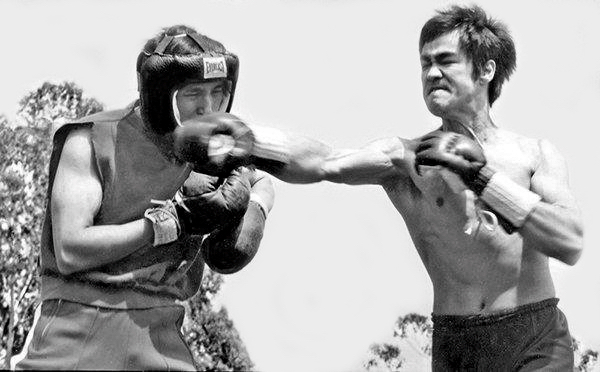
“The waist pivot is faster and easier to learn and is used as a basis for the teaching the art of hitting.”
Tao of Jeet Kune Do
Hook Kick
-
The hook kick is a sideways snap/vertical kick.
-
Don’t open the arc of the kick – keep it as straight as possible get power from the whip and snap.
-
Avoid using the hip since the leg is plenty strong enough to deliver knockout power and this will slow down recovery.
-
Don’t draw the lead foot back or to the side before delivery (as in Muay Thai).
-
Facing an opponent in a matched lead, the hook kick is JKD’s most dominant kick. Though not as heavy as the side kick, it is extremely fast and versatile.
-
The expert can strike with it up and down the body – head to shin. When combined with a fast lead hand, the side kick and feints, the lead hook kick is a constant threat to the opponent.
-
In Bruce Lee’s day the hook kick was used more frequently because most fighters (being classically trained) stayed more side-on in their stance. Today, with the proliferation of MMA and Muay Thai, most fighters are more squared up, which exposes them more to our straight, side, and snap kicks.
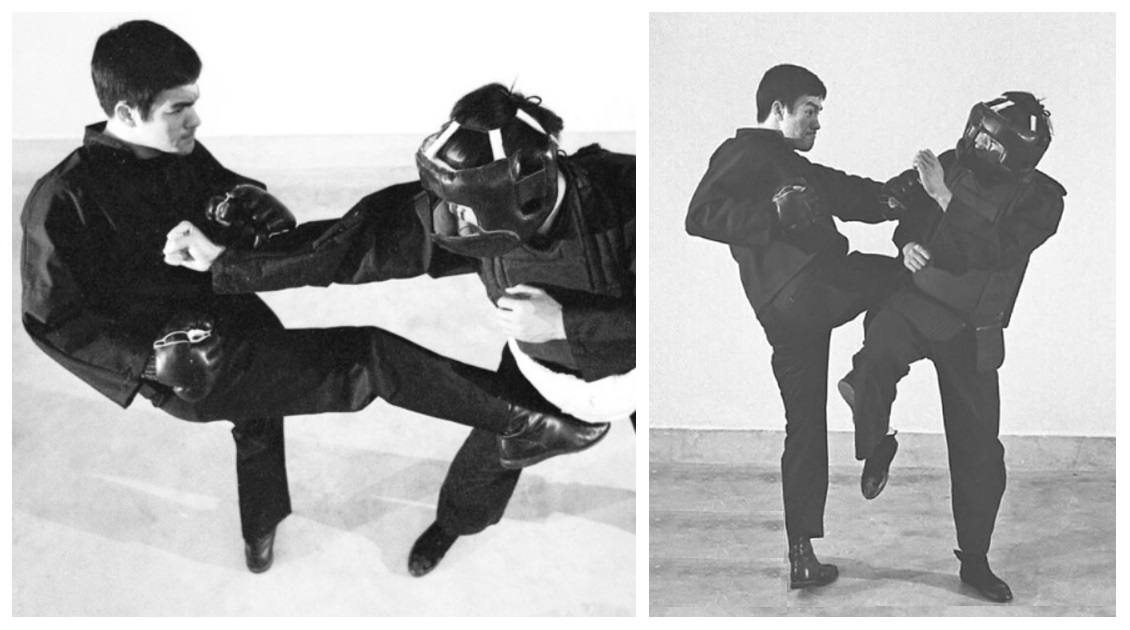
Rear Hook Kick
-
An overused kick today in martial arts because it doesn’t have as much reach as the lead leg, isn’t as accurate, opens your defense, is easier to see coming, and is harder to recover from than lead leg kicks so your rate of fire will drop.
-
Nevertheless, it’s a tremendously powerful kick!
-
Throw with snap while pivoting on the ball of the front foot.
-
Like with the lead hook kick, strike with the top of the foot, toe of the shoe, or ball of the foot.
-
Use the shin only for mid-range strikes when opponent is set up for the smash to the leg.
-
Recovery is more difficult than with lead hook kick, so use intelligently, cautiously.
-
Again, this is a very powerful tool but must be used smartly.
-
For example, imagine your opponent has moved away from your jab and is leaning toward your rear side. A round kick could be devastating in such an instance.
Side Stepping & Pivoting
-
The sidestep can go not only east and west, but ENE, ESE, WNW, etc.
-
Keep steps short, quick, light.
-
Be ready to counter the second the attack has passed you or as the opponent looks to adjust his position – catch him when he isn’t set!
-
As a general rule: use two small steps rather than one large one as the latter can cause your on-guard stance to erode.
-
The Pivot is done with the back leg sliding right or left, like the hand of a clock and the front leg acting as the pivot point.
-
The Pivot is a tremendous inside fighting tool, creating an angle to hit from with the utmost smoothness.
-
The Pivot can be used with a “push” or a “swing” and the distance can be adjusted by either shortening or lengthening the landing of the pivoting foot or by using a quick step right afterwards.
“A fighter without mastery of these skills is always in danger of getting overrun by an aggressive attack because there is no other reliable way to deal with the momentum of a charging opponent who beats your stop hit.”
Jim Driscoll
Sil Lim Tao – Section 3
-
Introduces two of the three “seed” hands of Wing Chun
-
Tan Sao (spreading hand)
-
Fook Sao (covering, subduing hand)
-
-
The Tan hand represents the action of your arm should you be in contact with the inside of your enemy’s arm.
-
The Fook sao represents the action of your arm when you have outside contact with your enemy’s arm.
-
Also, we have the Wu Sao (guarding hand).
-
The key principle of Lat Sau Jik Chung is introduced… When in contact with your enemy’s arms, do not chase his hands – instead, flow toward his center of mass.
-
We do not seek contact (otherwise known as Bridge) for the sake of it. Sometimes we use contact to control while hitting; sometimes we have been jammed while attempting to hit or in an effort to not get hit or grabbed.
-
All contact hand techniques in Wing Chun are a type of Fook Sao or Tan Sao – hence whey they are referred to as seed hands.
-
The concept of Lin Sil Die Dar is also introduced in that by using proper structure, one can subdue a strike or grab while attacking at the same time.
Level 3
Eye Jab
-
The longest, fastest hand weapon in JKD. It’s reach, speed, and soft target make the leading finger jab a particularly deadly self-defense weapon that can alter a fight at any point.
-
Should be thrown at every opportunity, and can be thrown in blistering sets of two, three, and four.
-
Used with the thrust (leaning slightly forward but make sure the lead shoulder stays in line) or the stepping thrust (step only the lead foot toward the target while the rear heel raises).
-
Adding this footwork – Thrust and Stepping Thrust – allows the JKD fighter a tremendous range advantage.
“Like a fencer’s sword that is always in line, the leading finger jab is a constant threat to your opponent… basically it is Western sword fencing without a sword and the primary target is your opponent’s eyes.”
Tao of Jeet Kune Do
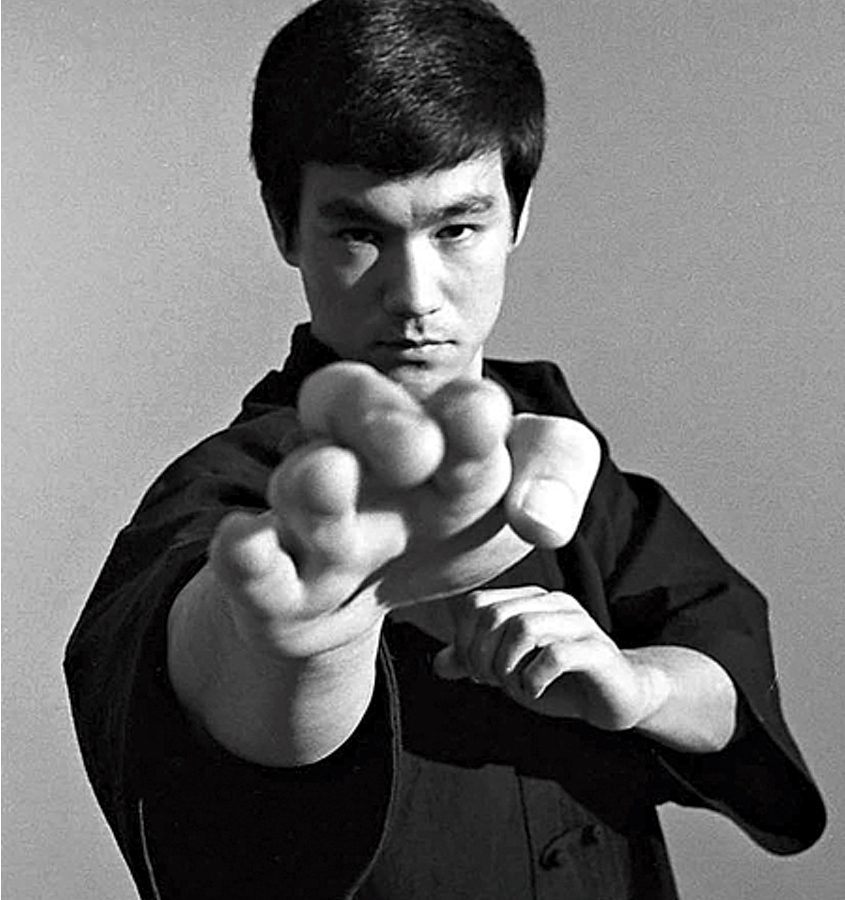
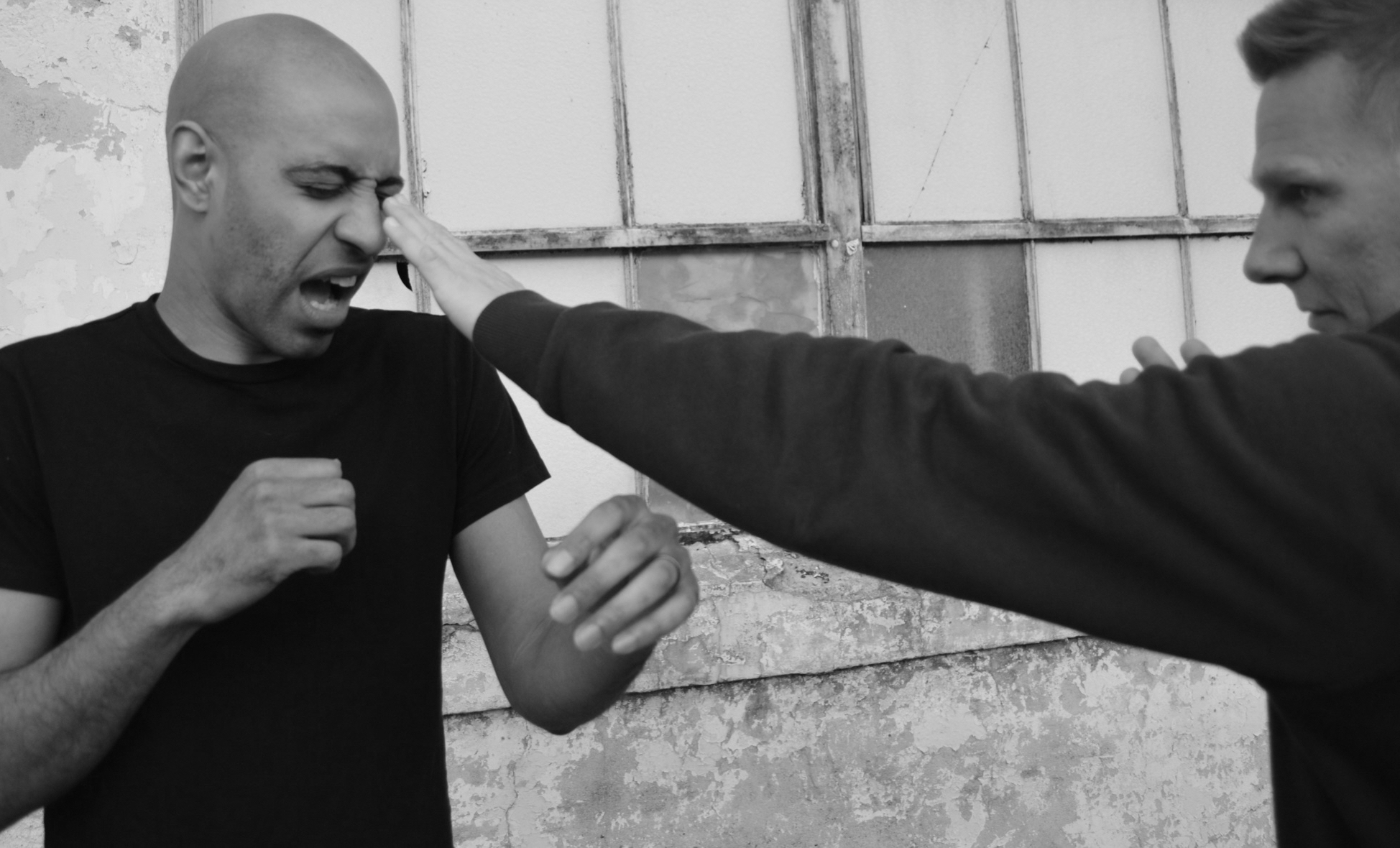
Uppercuts & Shovel Hooks
-
Beautiful close-quarter blows.
-
Switch to mid-range on-guard stance, lowering your center of gravity.
-
Practice double contact and keep the blows compact don’t wind-up by dropping the hand before the punch, just let it fly.
-
Power comes from the proper alignment of the body (power-line).
-
The uppercut is a shoulder whirl powered punch; combined with upward surge (as in coming out of a duck or crouch) gives the uppercut serious power.
-
Don’t try uppercuts from mid/long range (fighters that have gotten away with this have always been markedly quicker than their opponent).
-
At impact there is a direct line from the fist, forearm and elbow straight to the floor… The palm of the punching hand is facing you and should never travel past the tip of your nose in height or your defense will be compromised.
-
The Shovel Hook variation of the uppercut is used when the JKD fighter is at extreme close range.
-
Shovel Hooks “scrape the paint” off your ribs in that your forearms stay close to your own body and you use a slight, but violent, hunch of your hip to power the blow FORWARD into the foe’s midsection – not upward as with the uppercut.
-
They are murderous body blows once you get the knack for them.
Side Kick
-
The side kick is the heavy artillery of JKD and can target nearly every part of the opponent’s body.
-
Primary target is the opponent’s lead leg – especially the knee.
-
Uses the longest weapon to nearest target principle.
-
Like with all JKD kicks the lead leg sidekick is like a boxer’s jab, only much more damaging, longer, and aimed at more vulnerable real-estate.
-
The rear foot should shoot forward explosively – in a straight line, no hopping – the speed of this kick initiates with the rear foot.
-
The rear foot shoots to the front and immediately the lead leg darts out – no hesitation, no delay!.
-
Keep the kicking leg loose, raise knee to the level of the target.
-
The snap from the knee, the lean back and jerk of the hip are simultaneous.
-
A snappy side kick allows for speedy recovery. Too much push on the kick drags you forward with it, making you easier to counter.
-
“A straight knee is a broken knee” – the opponent’s lead leg is forever in danger against the crafty, mobile, sharpshooter.
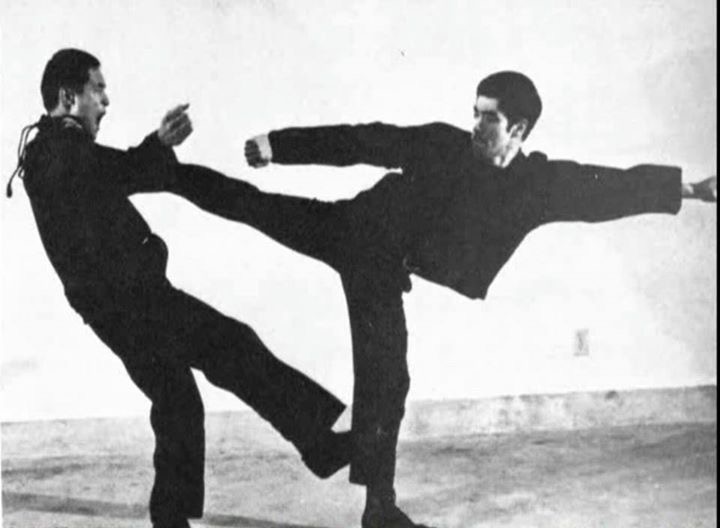
Oblique Kick
-
Can be used straight to the target or as a stomp.
-
A bothersome kick, but not a killer.
-
Is a mid-range weapon, so we must be careful in its use since the oblique kick requires the disruption of balance at mid-range… A well-timed punch can easily lead to a knockdown.
-
Target the opponent’s shin and knee – especially to the inside or outside of their leg.
-
Especially effective if you’ve grabbed or immobilized your enemy’s arm or arms.
Essential Drills
-
Line Drill – Jab x3 to Side Kick.
-
Working on rapid, smooth footwork.
-
-
Intercepting Jab Drill – moving & hitting as partner comes forward.
-
15 push-ups and one-minute plank.
-
One 3-minute focus mitt round with coach – moderate pace with all techniques and defense against rushes as well as single strikes.
-
Jab-to-Jab interception drill on heavy bag.
-
Box Defense drill – four corner defense with back hand.
-
The back hand plays goalie while footwork and the blistering counter-lead punch do their work.
-
Catches what gets past the lead hand and footwork.
-
Stay in your discipline and you are very, very hard to reach cleanly and often.
-
Sil Lim Tao – Section 4
-
Recovery phase of form.
-
Gum Sao, Lan Sao, Fak sao, Jum Sao, Jut Sao & Bui Jee all introduced.
-
Use of these techniques is only because the fighter has been surprised or the primaries of footwork and interception were not successful.
-
These are corrective techniques designed to be used only momentarily and only for the purpose to pave the way for the primary techniques and concepts.
